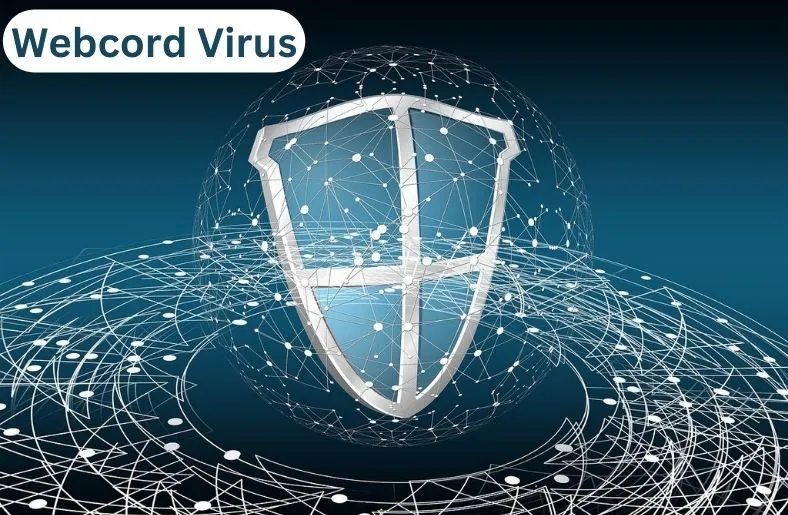The WebCord virus is a severe digital threat. This malware quietly infiltrates your computer. It aims to steal sensitive information. Understanding the WebCord virus is essential. It aids in safeguarding your business and personal information. With cyber threats on the rise, knowledge is your best defence. Recognizing how this virus works can prevent significant damage. In today’s digital age, staying informed is crucial. By learning about WebCord, you can enhance your cybersecurity measures. This article will provide a detailed overview. You’ll discover the virus’s origins, behaviour, and how to stay safe. Remain alert and safeguard your online activities.
What is WebCord Virus?
The WebCord virus is a type of malicious software or malware. It disguises itself as harmless software but hides harmful intentions. WebCord’s primary purpose is to steal sensitive data, targeting personal information, financial details, and login credentials.
Transitioning to how it operates, WebCord infiltrates your computer through phishing emails or compromised websites. Once inside, it monitors your activities. It captures keystrokes and tracks your browsing habits. This way, it collects valuable information without your knowledge.
Furthermore, WebCord can alter your browser settings. It redirects you to fake websites and floods your screen with unwanted ads, disrupting your everyday computer use and making your system vulnerable to further attacks.
Understanding the WebCord virus is crucial. Knowing its definition, purpose, and objectives helps you stay alert. It empowers you to take necessary precautions and protect your digital security.
How WebCord Virus Infects Systems
WebCord virus employs various tactics to infiltrate systems. Understanding these infection routes is essential for prevention.
- Phishing Emails: One standard method is through phishing emails. These emails look legitimate but contain malicious links or attachments. Once clicked, the virus installs itself on your system.
- Software Vulnerabilities: Another route is through software vulnerabilities. WebCord exploits weaknesses in outdated or unpatched software. It uses these gaps to gain unauthorized access.
- Compromised Websites: Visiting compromised websites is also risky. These sites can only download WebCord if you know it. Simply browsing can lead to infection.
- Bundled Software: WebCord can hide in software bundles. When you download and install seemingly harmless programs, WebCord appears. Always opt for custom installations and decline unwanted extras.
- Infiltration Process: Once inside, WebCord integrates into your system. It often renames files and hides them in deep directories. This makes detection and removal challenging. It also uses rootkit techniques to remain invisible to antivirus programs.
- Silent Operation: WebCord operates silently, monitoring your activities. It captures keystrokes and logs your browsing habits. This data is then sent to remote servers controlled by cybercriminals.
WebCord uses deceptive tactics to infect systems. Staying informed about these methods helps you protect your digital environment. Regular updates and cautious browsing are vital defences.
Behaviour and Impact of WebCord Virus
Once installed, the WebCord virus exhibits several harmful behaviours. Understanding these actions can help you recognize and combat the threat.
- Keystroke Logging: WebCord silently logs every keystroke. This allows it to capture passwords, credit card numbers, and personal messages.
- Data Theft involves stealing sensitive data, including financial information and login credentials, and sending it to cybercriminals.
- System Alteration: WebCord can change system settings and browser configurations. It redirects your searches and displays unwanted ads.
- Resource Drain: The virus uses significant system resources. This leads to slower performance and frequent crashes.
- Impact on Users: The consequences of a WebCord infection are severe. Compromised security can result in identity theft and unauthorized access to accounts. Financial loss is common as cybercriminals exploit stolen information.
- Privacy Invasion: WebCord invades user privacy by tracking online activities and monitoring browsing habits, further compromising security.
- Spread and Victims: WebCord’s spread is widespread, affecting millions globally. Victims include individuals and businesses. The financial impact is substantial, with losses reaching millions of dollars annually.
WebCord virus is a significant threat. Its behaviours, such as keystroke logging and data theft, have severe impacts. Recognizing these signs early can help mitigate damage and protect your digital life. Stay vigilant and informed to safeguard against this digital menace.
Detecting WebCord Virus
Recognizing a WebCord virus infection early is crucial. Here are common signs to watch for:
Performance Issues: Your computer could be infected if it slows down or crashes often, as WebCord uses a lot of system resources.
Error Messages: Unexpected error messages, especially related to system processes, are red flags. They often indicate a deeper issue.
Browser Anomalies: Changes in your browser settings are another sign. WebCord may alter your homepage or search engine without your consent.
Increased Pop-Ups: A sudden surge in pop-up ads is a clear symptom. These ads often appear even on trusted websites.
Suspicious Activity: If you notice unfamiliar programs or toolbars, investigate further. These are common with WebCord infections.
In summary, be alert for these signs. Early detection can help you take prompt action and protect your system from further harm.
Steps to Remove WebCord Virus
Removing the WebCord virus requires a systematic approach. Here’s what you need to do:
1. Manual Removal Steps
- Identify Suspicious Programs: Review your installed programs list and uninstall any unfamiliar or suspicious ones.
- Terminate Suspicious Processes: Use Task Manager to end suspicious processes in the background.
- Delete Malicious Files: Locate and delete any files associated with the WebCord virus manually.
2. Using Antivirus Software
- Scan with Malwarebytes: Run a full system scan to detect and remove any remaining traces of the WebCord virus.
- Utilize HitmanPro: Run a secondary scan with HitmanPro to identify and eliminate persistent threats.
- Use AdwCleaner: AdwCleaner can help remove malicious browser extensions and adware that may have been installed alongside the WebCord virus.
- Try ESET Online Scanner: Perform a final scan with ESET Online Scanner to ensure your system is immaculate.
3. Resetting Browser Settings and Checking for Malicious Extensions
- Reset Browser Settings: Reset your web browser to its default settings to remove any unwanted changes made by the WebCord virus.
- Check for Malicious Extensions: Review your browser extensions and remove any suspicious or unknown ones that may be related to the WebCord virus.
By diligently following these steps, you can remove the WebCord virus from your system and restore its security and performance.
Preventing WebCord Virus Infections
To safeguard your system against the WebCord virus, follow these preventive measures:
1. Vigilance during Software Installations
- Be cautious: Exercise caution when installing new software and opt for custom installations to avoid bundled malware.
- Scrutinize each step: Pay attention to each installation step and decline any unfamiliar or optional software.
2. Regular Security Scans
- Use reputable antivirus software: Conduct regular system scans to detect and remove potential threats.
- Stay updated: Ensure your antivirus definitions are up to date to identify new strains of malware effectively.
3. Browser Hygiene and Secure Browsing Practices
- Reset browser settings: Periodically reset your browser settings to default to remove unauthorized changes.
- Practice secure browsing: Avoid visiting suspicious websites, clicking on unknown links, and downloading files from untrusted sources.
Adopting these preventive measures can significantly reduce the risk of WebCord virus infections and keep your system secure.
Frequently Asked Questions
1. How does WebCord virus infiltrate systems?
- WebCord spreads through phishing emails and exploits software vulnerabilities.
2. Can I remove the WebCord virus manually?
- Yes, follow the steps outlined in our manual removal guide.
3. What’s the financial impact of WebCord?
- WebCord-related fraud results in substantial financial losses for individuals and businesses.
4. Is the WebCord virus exclusive to Windows?
- While primarily affecting Windows systems, caution is advised across all platforms.
5. How often should I scan for malware?
- Regular scans are crucial; ensure your system’s security by conducting them frequently.
Conclusion
In conclusion, the WebCord virus poses a significant threat to digital security. It aims to steal sensitive data through stealthy infiltration and malicious behaviour. Understanding its origins, infection routes, and impact is crucial for effective prevention and mitigation. By recognizing common signs of infection and employing proactive measures such as regular security scans and browser hygiene practices, users can protect themselves against this digital menace.
Additionally, knowing how to remove the virus through manual steps or using antivirus software enhances preparedness in case of an infection. Stay informed, vigilant, and proactive is critical to safeguarding against the WebCord virus and other cyber threats in today’s digital landscape.





